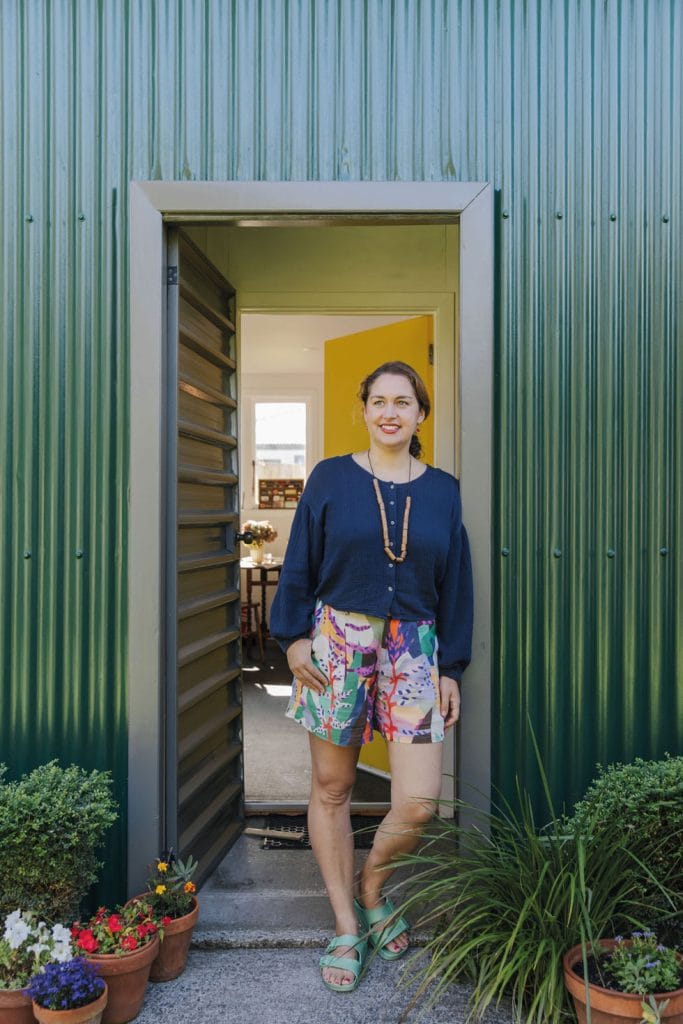Central to Ōtautahi/Christchurch artist Julia Holderness’ practice is an interest in art history and women practitioners, and how archives might allow us to engage with the current moment. Her work is led by research into the Modernist period and guided by late artist-designer Florence Weir, a fictional character she made up.
How interesting, Julia — tell us more about that… The idea of a virtual archive is significant to my work — a space where the invented figure facilitates connections that go beyond recorded histories and has the potential to fill in gaps. As a fantasy persona, Florence can be inserted into a multiplicity of histories. She acts as an imagined bridge to various movements, periods and people.

Having completed a Bachelor of Fine Arts at the University of Canterbury and an honours year in visual arts at AUT, you’ve just wrapped up your PhD in practice-led visual arts at AUT — what was your focus for that? Titled Ever Present Archiving: Methodologies for art histories through invention, fabrication and social practice, my PhD project explores archives and the construction of art-historical narratives. Through the use of invented personae, artworks and exhibitions, my installations combine mixed-media fabrications with historical materials from art and design archives.
It’s great that the project can be ongoing. Of course, I want my practice to keep shifting, but the invention of Florence, who now has quite a history, is full of potential and I have future chapters of her life to explore. She gives me the ultimate creative freedom and the ability to move across mediums, movements and timeframes, and creates space for other [creatives] to work with her.
What mediums do you use? My installations usually include soft furnishings and domestic objects — textiles, design and ceramic elements, and sometimes printed items such as posters. I often create vitrine installations, which feature a dense assembly of research materials, both fabricated and real, informed by the conventions of museum and exhibition display, and working to combine physical and conceptual elements within the ephemera. I also use audio elements within my installations, for which I work with voice actors. Recently I’ve been exploring Florence’s watercolour period in the South of France during the ’30s.
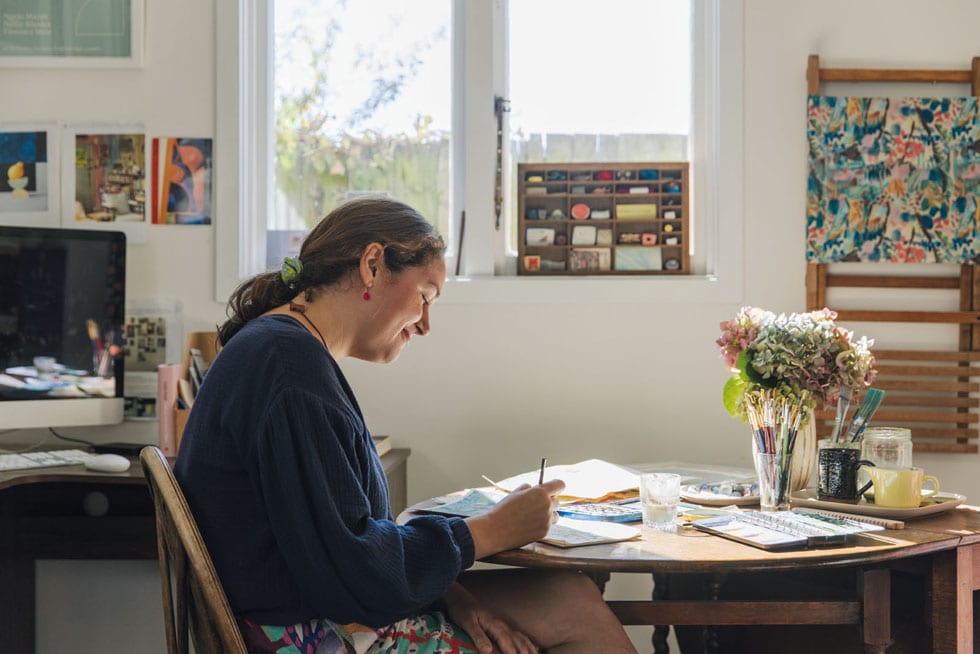
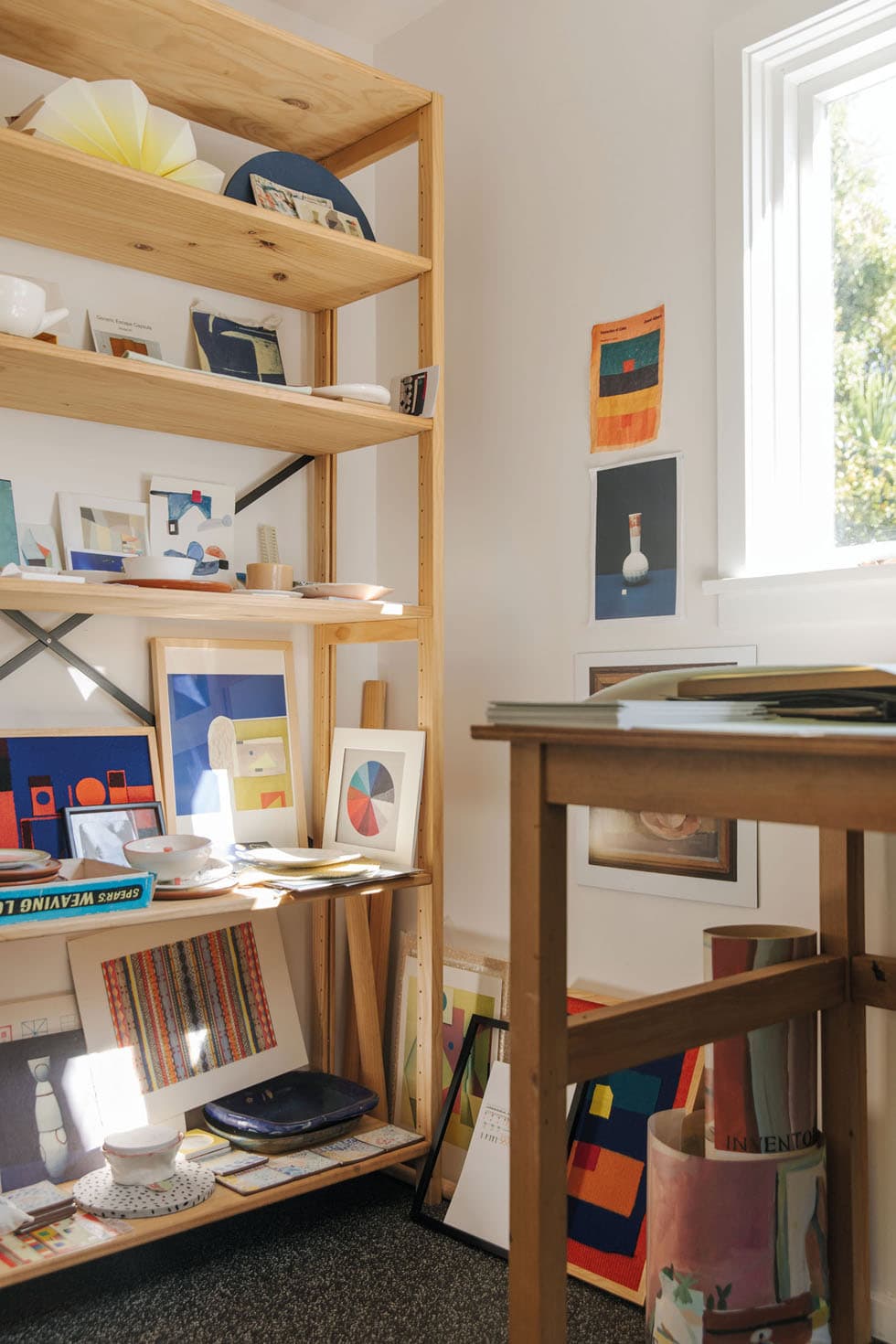

As a working mum, how do you carve out physical and mental space for your practice? Having a decent-sized studio at home, in a room we had built at the back of our garage, has been critical to making things work over the past five or so years. It’s wonderful not to have to commute and that I can use evenings and weekends if I need to in the run-up to exhibitions or during intensive writing periods.
My boys have just got to the age where they can sit with me in the studio and do some quiet painting on days when they’re at home. It’s quite a special place to them because it was completely off limits when they were younger. They’ve learned to tiptoe around my work on the floor and be very careful.
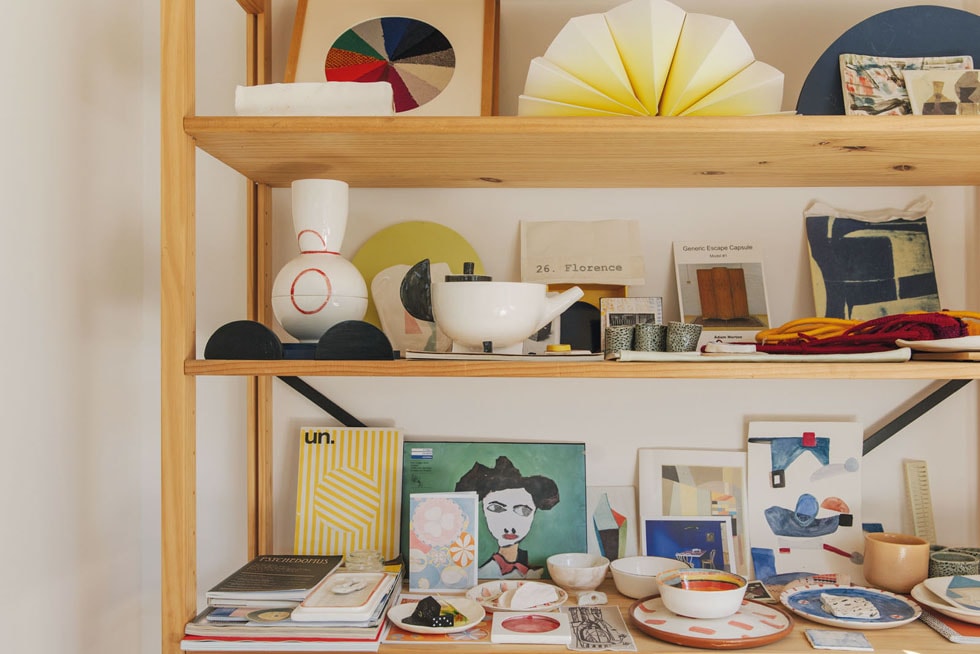

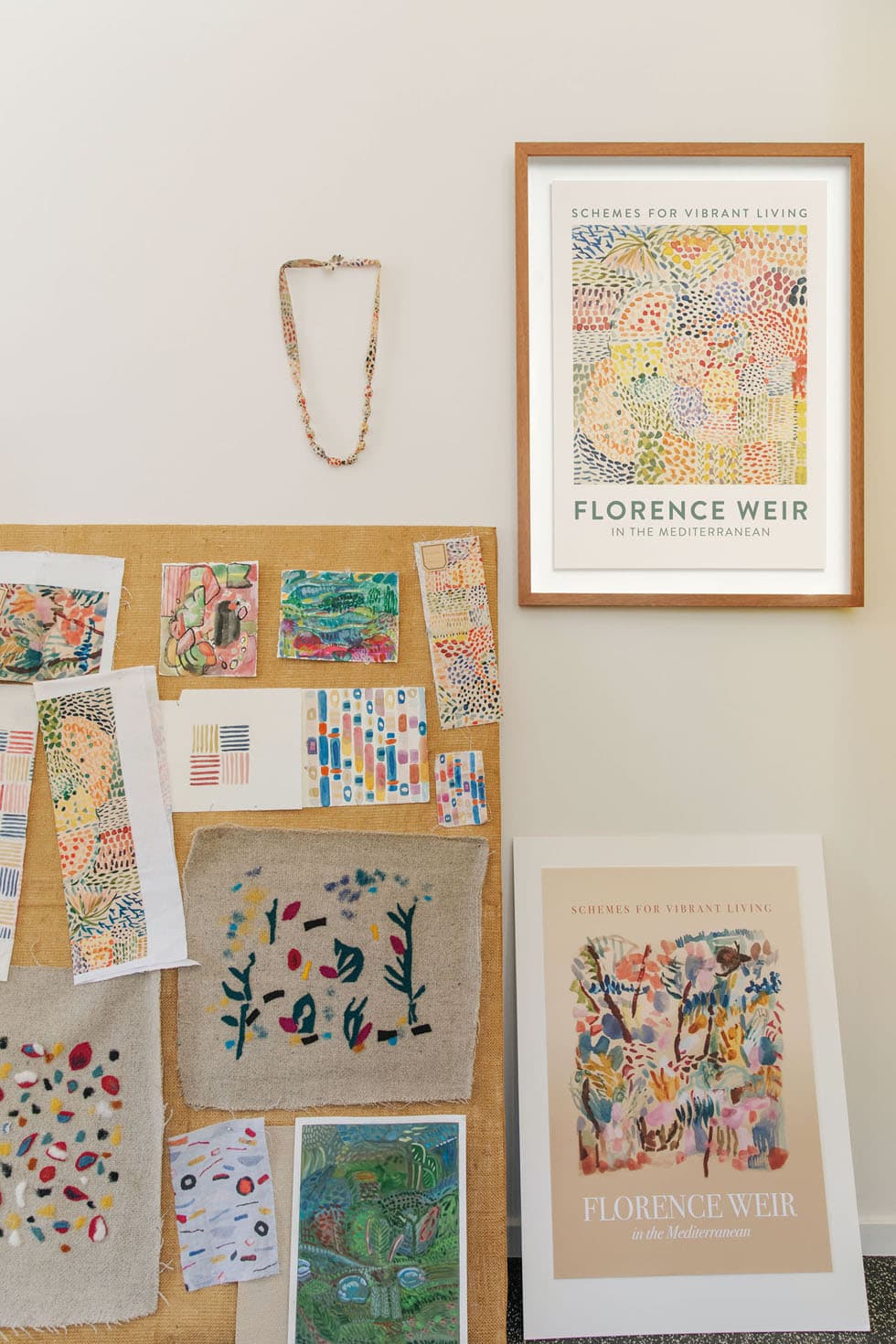
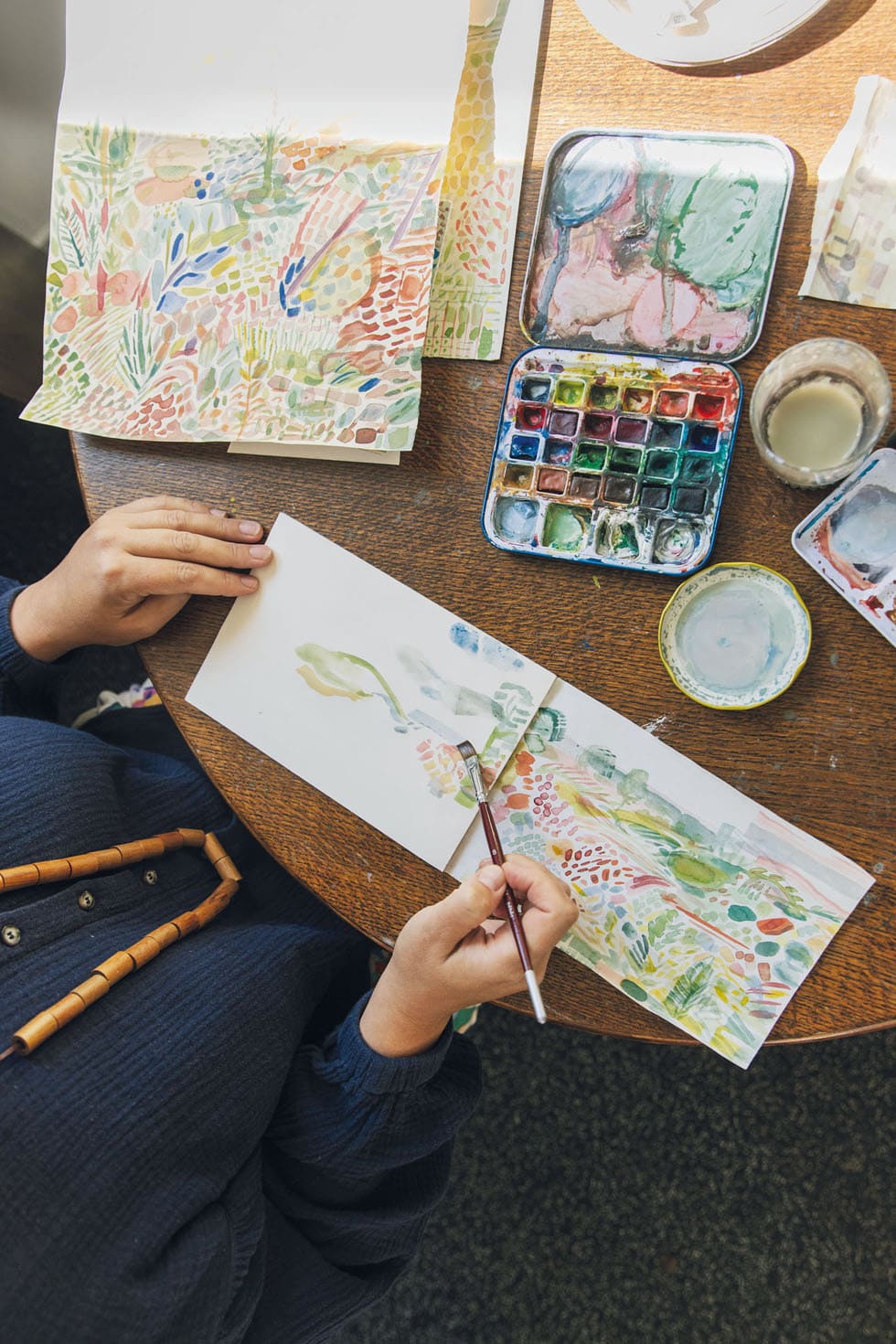
How do you structure your workdays? They’re pretty short, given I still spend some days with my youngest son and my eldest gets home from school at around 3pm, so I usually get started as soon as I can in the mornings. I like to do a bit of pottering in my studio, which is a little ritual to do with looking and reviewing, rearranging objects on surfaces and shelves, and maybe rehanging works on the walls. My floor is covered in layouts as it’s the easiest way for me to see relationships between imagery and objects. I’m often writing little scenes about Florence, as I like to develop and flesh out the work I’m making in text.
How do you overcome creative blocks? In the warmer seasons, gardening helps me relax and I like to pick things for my studio vases. Regularly visiting galleries and getting to openings is important for me and I also really value having visitors to my studio. I often invite friends and other artists in for a chat, and love sharing what I’m doing and seeing what people respond to. If my partner Andy and I have people over at the weekend, I usually invite them out to the studio. I’m always thrilled when someone wants to visit!
You have a show at Tāmaki Makaurau/Auckland gallery Sanderson Contemporary from September 27 to October 22 — what can we expect from that? I’m thinking about the artist residency as a social structure and designing a set of objects that promotes social connections and an idiosyncratic sense of place. I’m imagining Villa Margaux, a place in the South of France in the 1930s that functioned for Weir and others as an artistic residence for gatherings, holidays and respite. Later in the 1950s, Weir produced a range of whimsical tableware named Margaux, which may have been named after the villa. There will be some watercolour collages, wallpaper, and likely some ceramics and textiles in the mix too.
juliaholderness.com
Interview Alice Lines
Photography Nancy Zhou

